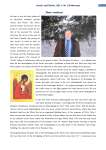Статьи журнала - Arctic and North
Все статьи: 955
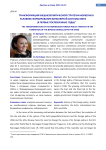
Статья научная
After the Second World War changes in the foreign policy of Norway became a consequence of the problems that the country faced in 1940. The growing confrontation between the East and the West led to the formation of the bipolar world and made the Norwegian government change the foreign policy.
Бесплатно
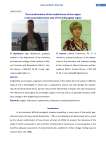
Статья научная
Studied the accumulation, migration and transformation of the mobile forms of copper in different types of soil in Arkhangelsk. In urban soils, as opposed to natural, not only changes the relationship of transformational forms, but the nature of the relationship of copper with soil components. The influence of technogenic to consolidate copper in the soil and on its possible transition conditions change to the neighboring environment.
Бесплатно
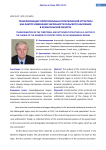
Статья научная
The analysis of the results of studying the question of a role of the transformation of the territorial and settlement structure in the Arkhangelsk region as a factor of the change of number of country people during the period between population censuses of 1926–2010 is presented in the article.
Бесплатно
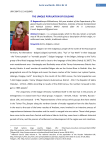
The unique population of dolgani
Статья научная
Dolgans – is a unique people, which to this day remain a nomadic way of life and traditions. The article gives a description of their origin, resettlement area, beliefs, traditional culture.
Бесплатно
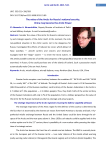
The value of the Arctic for Russia's national security, China may become the Arctic Power
Статья научная
Consider the value of the Arctic for Russia's national security and strategic aspects of the Arctic itself. At the moment, the military- political situation in the Arctic seems not to be dangerous for Russia. Investigated the effects of reduced ice cover, which allows US Navy warships — aircraft carriers and cruisers and destroyers equipped with the “Aegis” system — to enter the Arctic waters. In this article possible scenarios of conflict and prospects of the geopolitical situation in the Arctic are examined. In future, China could purchase one of the islands of Iceland. Such a possession would automatically make China an Arctic Power.
Бесплатно
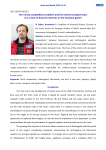
Статья научная
Analysis of the causes and sources of the so-‐called "Arctic competition" between Murmansk and Arkhangelsk identifies strengths and weaknesses, opportunities and threats (SWOT-‐analysis) of the marine transport hubs. The focus of the article is the transport integration problem and logistics. Arkhangelsk and Murmansk marine nodes were created as the part of a single freight logistics system in the North and were not supposed to compete, but to complement each other. Nearest future will bring up the issue of the national transport and logistics integrator with the functions of the “upper-‐corporative” logistics center responsible for evidence-‐based, homogeneous and transparent re-‐distribution of traffic and freight logistics market bases in the western part of the Russian Arctic.
Бесплатно
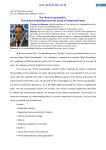
The “Arctic Encyclopedia”: The Paulsen Publishing House has issued a fundamental work
Статья научная
Here we present a review of a two volume scientific work published in April 2017 by the Paulsen Publishing House — the “Arctic Encyclopedia”. The authors — 100 people from different fields of science — enabled the publisher to get a detailed coverage of geography, flora and fauna, climate, indigenous peoples of the Arctic, as well as international cooperation, social, economic and cultural development of the Arctic areas. This work is a fundamental one and deserves close attention from every person interested in the Arctic issues.
Бесплатно
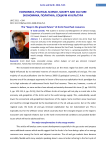
The “keep in the ground future” of Arctic fossil fuel resources
Статья научная
It is extremely important to understand which role Arctic fossil fuel resources will play in the development and geopolitics of the Arctic region. The article analyses the recent trends in the world energy supply with special focus on renewable energy and future demand for fossil fuels. Focusing on the Arctic LNG projects it comes to the conclusion that there is a growing possibility that the majority of Arctic oil and natural gas will be kept in the ground. Such an outcome would strongly influence the sustainable development and geopolitics of the region.
Бесплатно
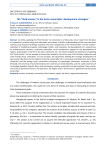
The “third mission” in the Arctic universities’ development strategies
Статья научная
Currently, applying the “third mission” at universities is of relevance, since it also forms the basis of universities' activities along with education and science. Scientific understanding of this issue had been carried out by Russian and foreign scientists. The main components of the “third mission” are the commercialization of intellectual property, technology transfer, and innovation, the development of a university as an entrepreneurial structure, continuous education, social involvement, support for the development of regions, participation in the life of the local community, etc. The article analyzes the experience of applying the “third mission” on the example of universities located in the Arctic zone of the Russian Federation and some foreign Arctic universities. For this purpose, the documents defining the strategic development of two Russian (Northern (Arctic) Federal University named after M.V. Lomonosov and Murmansk Arctic State University) and five foreign Arctic universities (University of Copenhagen (Denmark), University of Oulu (Finland), the University of Iceland (Iceland), the University of Umeå (Sweden), and the Luleå University of Technology (Sweden). Specific forms and mechanisms used by universities are also analyzed. They contribute to the assessment of nature, characteristics, the degree of the “third mission” application carried out by universities.
Бесплатно
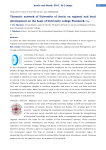
Статья научная
In article the basic directions of activity of a thematic network of University of Arctic regions on regional and local development on the basis of University college Finnmarka reveal.
Бесплатно
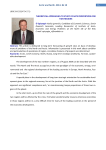
Theoretical approaches to study of rate proportions for two regions
Статья научная
This article is dedicated to long-term forecasting of growth rates on base of development of problems of the North and Arctic. Information is presented in this work about condition and particularities of operations of region, correlative features of prospects are determined.
Бесплатно

Theoretical method of environmental risk assessment with given environment factors
Статья
Hydrometeorological factors are significant for environmental conditions, being the origin ot contributing to the increase/decrease of environmental hazards.
Бесплатно
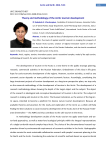
Theory and methodology of the Arctic tourism development
Статья научная
In order to study the ideas of development of the Arctic tourism the author offers: five levels of applied scientific research on studying the prospects of the Russian Arctic tourism, creation of regional innovative system of water resources in the Arctic zone of the Russian Federation, and also tourist recreational system in the Arctic as a model of the safe tourism in the Arctic.
Бесплатно
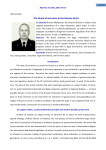
Threats of terrorism in the Russian Arctic
Статья научная
The article examines the legal, institutional, socioeconomic and political issues that promote terrorism. Based on the analysis of the facts of the modern history of terrorism in Russia, proposes actions to deal with it, legal instruments, anti-terrorism policies, including the Russian Arctic.
Бесплатно
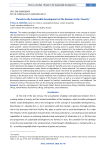
Threats to the sustainable development of the Russian Arctic: poverty
Статья научная
The modern paradigm of the theory and practice of social development is the concept of sustainable development, the emergence and spread of which was associated with the emphasis on environmental pollution and overpopulation of the planet against the background of limited natural resources. Today, sustainable development is defined as the result of the interaction of a man, the economic system, and nature at the global, national, regional, and local levels. It is expressed, to a certain extent, by economic, environmental, and social sustainability. Modern goals in the field of sustainable development are to promote green growth, rational environmental management, ensuring access to quality health and education services, and improving the well-being of the population. The latter implies, first, the reduction of multidimensional poverty, the numerous groups of social localization, i.e., disabled people, families with children, single-parent families, and ethnic minorities. The aim of the study is to assess the level and extent of poverty and its social localization in the framework of achieving sustainable development of the regions of the Russian Arctic. The relevance of the study is determined by the fact that the rates and proportions of sustainable development of the Russian Arctic depend on the qualitative state of human potential (carried by the population). The qualitative state of human potential depends on the level of well-being of the population, which determines the degree of satisfaction of needs for benefits and access to social services. Poverty as a socio-economic phenomenon creates threats of degradation of human potential. The research hypothesis is based on the understanding that poverty is a systemic factor that limits the possibilities of a high-quality reproduction of human potential and, accordingly, promising opportunities for achieving sustainable development in the Russian Arctic. The research methods were a statistical analysis of the socio-economic situation of families with children in the regions of the Russian Arctic, as well as an analysis of regulatory legal documents governing measures of social support for families, motherhood, paternity, and childhood. The research results are focused on their use for achieving sustainable development of the Russian Arctic.
Бесплатно
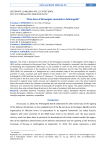
Three lives of Norwegian consulate in Arkhangelsk
Статья научная
The article is devoted to the history of the Norwegian Consulate in Arkhangelsk, which began in 1815 and has continued to the present time. The history of the Consulate is analyzed from the standpoint of identifying the fundamental differences in the activities in each of the three periods (lives) of the Consulate. This, in particular, is the novelty of the research. Moreover, the first two lives (1815–1920 and 1924–1939) are presented as a background to a more detailed study of the prerequisites for creation, priorities in work, successes and some failures of the modern one — the third Consulate reopened in Arkhangelsk in 2010 and has the status of “Honorary”. The authors pay attention to the personal factor — the life path of the first and current honorary consul Andrei Alexandrovich Shalev. His activity was mainly discussed in regional mass media and was not subjected to research analysis. Even the actual material about the events held by the Honorary Consulate was not collected and not systematized, although it has relevance, as it concerns the interests of thousands of residents of the region. The authors believe that in this article they only outlined those directions in the study of consulates that deserve attention.
Бесплатно
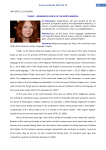
Tlingit – indigenious people of the North America
Статья научная
Focus on the issues of the language, resettlement and migration tlingit cultural values, customs, traditions, religion, social and economic status, political leaders.
Бесплатно
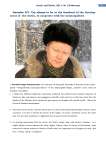
To be always on a first line of development of the Arctic regions, to cooper-ate with municipalities
Статья
Бесплатно
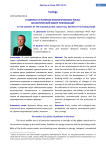
To the concept of the ecological risk. Analytical review of the publications
Статья научная
The article provides an overview of some of the publications on the theory and the concept of the risk in the context of the definition of the environmental risk for the period from the end of the XX-th century to 2013. Attention is given to the role and place of the theory of risk, the development of "risk" of thinking within the paradigm of the "green economy", the dynamics of changes in the concept of the risk and different approaches to the definition of risk in the insurance business, financial operations, the military, in the task of ensuring food safety and health in hazardous production, environmental science and the practical arrangements for the protection of nature.
Бесплатно

